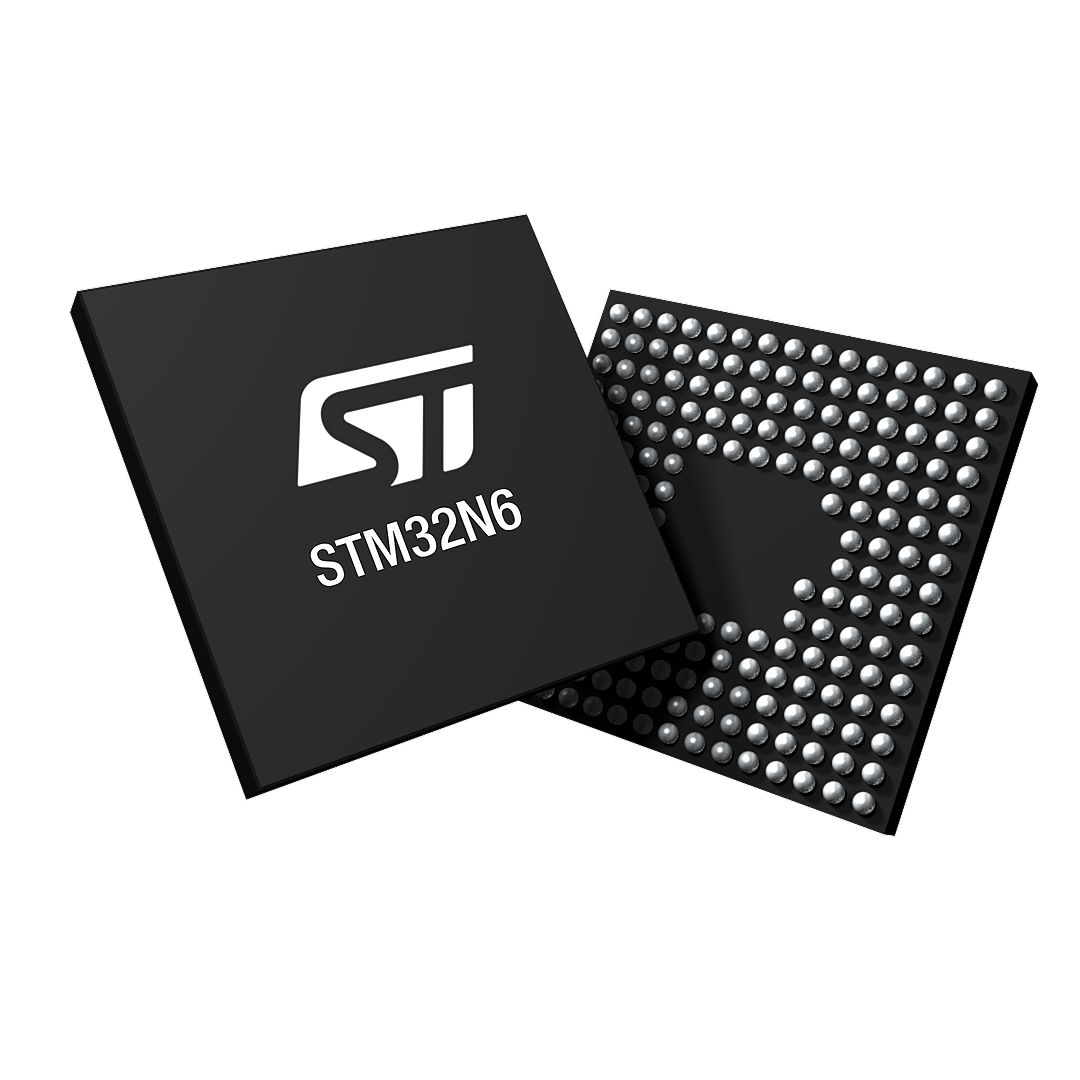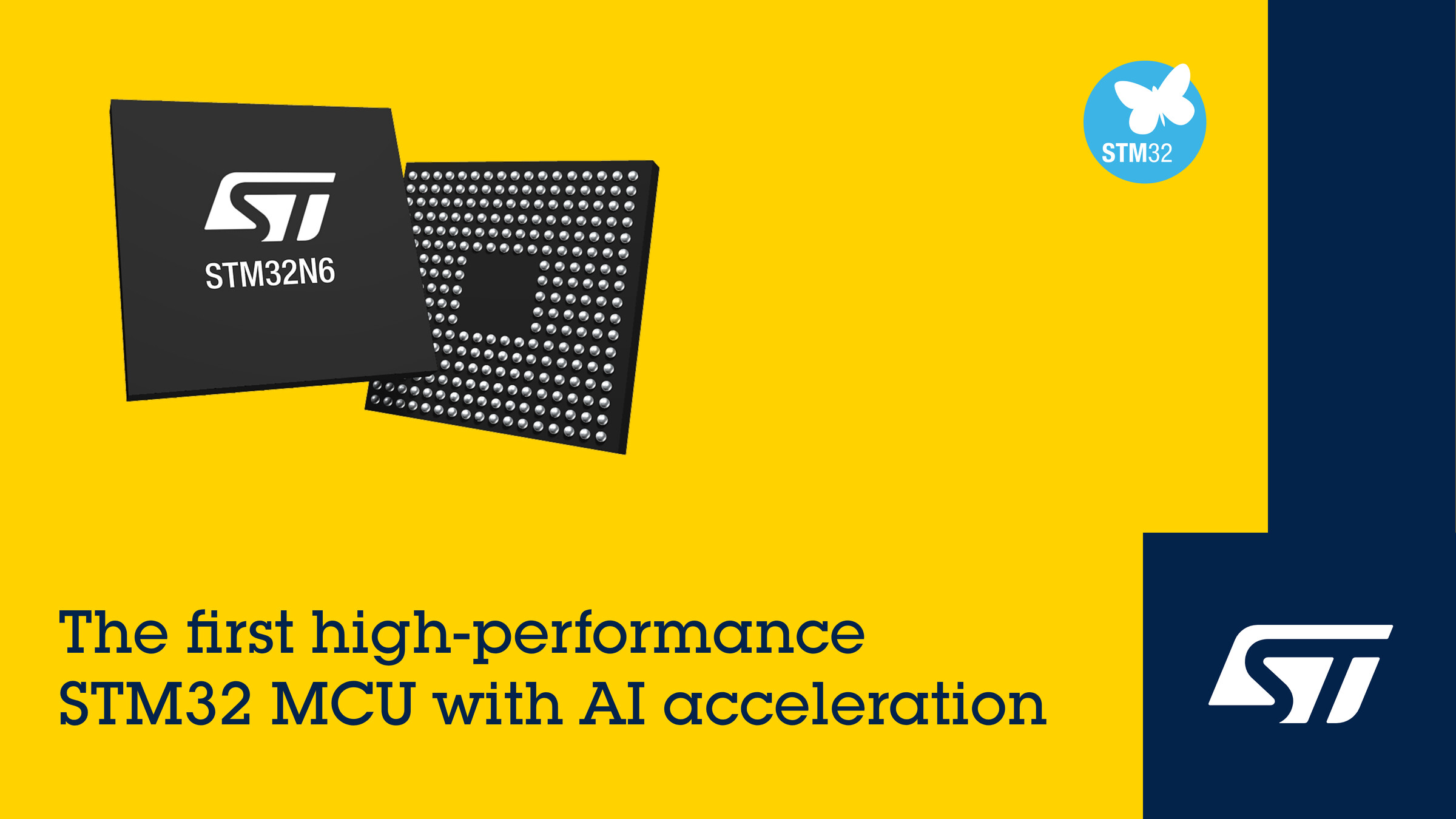ST마이크로일렉트로닉스(STMicroelectronics, 이하 ST)가 가속 머신러닝 기능을 최초로 통합한 새로운 마이크로컨트롤러(MCU) 시리즈를 출시했다고 13일 발표했다.
임베디드 추론 위한 NPU 최초 적용 STM32N6 MCU
컴퓨터 비전·오디오 프로세싱·사운드 분석 엣지AI 실행
ST마이크로일렉트로닉스(STMicroelectronics, 이하 ST)가 가속 머신러닝 기능을 최초로 통합한 새로운 마이크로컨트롤러(MCU) 시리즈를 출시했다고 13일 발표했다.
ST는 임베디드 AI 구현을 지원하는 새로운 MCU를 통해 비용 및 전력소모에 민감한 컨슈머 및 산업용 제품에서도 △컴퓨터 비전 △오디오 프로세싱 △사운드 분석 △기타 알고리즘을 활용하면서 소형 임베디드 시스템에서의 고성능 기능을 제공할 수 있다고 전했다.
ST는 STM32N6 마이크로컨트롤러(MCU) 시리즈가 지금까지 출시한 제품 가운데 가장 강력한 성능을 자랑한다면서, NPU(Neural Processing Unit)인 뉴럴-ART 가속기(Neural-ART AcceleratorTM)가 내장된 최초의 제품을 통해 최신 하이엔드 STM32 MCU 대비 600배 더 뛰어난 머신러닝 성능을 제공한다고 강조했다.
STM32N6은 2023년 10월부터 일부 주요 고객을 대상으로 제공돼 왔으며, 현재 대량 공급이 가능한 것으로 전해진다. 이미 △LG전자 △레노버 △알프스 알파인 △카를로 가바치 △메타바운즈 △오토트랙 등 다양한 기업들이 STM32N6를 조기도입했다.
LG전자 안예한 CTO는 “STM32N6은 뛰어난 AI 성능은 물론, 임베디드 시스템과 웨어러블 기기에 이상적인 소형 실리콘 패키지로 탁월한 유연성을 제공한다”면서, “또한, ST 뉴럴-ART 가속기로 구동되는 추론 속도는 기대치를 뛰어넘는 성능을 발휘했으며, 개발자들은 ST의 사용이 편리한 소프트웨어 툴을 통해 보다 원활하게 AI 모델을 MCU에 통합할 수 있었다”고 조기 도입에 대한 견해를 밝혔다.
이외에도 알프스 알파인은 자동차 인포테인먼트와 전자장치 등을 개발하는 글로벌 기업으로 STM32N6 도입에 ‘여러 센서 기반 AI 추론을 실행하고, 다양하고 향상된 사용자 경험을 제공하는 소형 장치 개발에 매우 적합하다’고 전했다.
메타바운즈는 소비자용 AR 글래서 개발에서 ‘STM32N6은 초경량의 컴팩트한 폼팩터로 임베디드 뉴럴-ART 가속기와 향상된 카메라 인터페이스, 전용 ISP(Image Signal Processor) 등의 뛰어난 기능을 제공하면서 배터리 수명 저하 없이 사용자 경험을 향상시킬 수 있었다’고 밝혔으며 초경량·고성능·저전력 칩은 웨어러블 제품에 핵심 요소로 고평가 받았다.

▲STM32N6 / (이미지:ST)
일반적인 하이엔드 STM32 MCU 대비 최대 600배 향상된 머신러닝 성능을 보유한 STM32N6는 뉴럴-ART 가속기에서 약 300개의 구성 가능한 MAC(Multiply-Accumulate) 유닛이 포함돼 최대 600GOPS(Giga Operations per Second)의 성능을 보여준다.
800MHz의 Arm® Cortex®-M55 코어를 탑재했으며, 4.2MB RAM 제공, ISP 통합 및 ISP IQTune 소프트웨어 지원,ST 엣지 AI 스위트(Edge AI Suite) 지원, AI 모델 라이브러리(Model Zoo) 지원 등 통해 개발 가속화와 시장 출시 기간 단축을 지원한다.
레미 엘 우아잔(Remi El-Ouazzane) ST MCU·디지털 IC·RF 제품 그룹 사장은 “ST는 작은 규모의 엣지 분야에서 중대한 변화를 앞두고 있다”면서, “고객들의 작업부하가 점점 더 AI 모델에 의해 보완되거나 대체되며, 현재 이러한 모델은 세분화·분류·인식과 같은 작업에 사용되고 있지만, 앞으로는 아직 개발되지 않은 새로운 애플리케이션에 적용될 것이다”이라고 말했다.
톰 해켄버그(Tom Hackenberg) 욜 그룹 메모리 및 컴퓨팅 그룹 수석 애널리스트는 “AI에 대한 일반적인 오해는 전력소모가 큰 빅데이터 센터 애플리케이션에만 적용될 것이라는 점이다”라면서, “하지만 오늘날의 IoT 엣지 애플리케이션은 AI가 제공하는 다양한 유형의 분석 기능이 필요하다”고 말했다.
그는 “STM32N6은 에너지 효율적인 MCU의 작업부하와 AI의 분석 기능을 결합해 컴퓨터 비전 및 대규모 센서 기반 성능을 제공함으로써 현대 장비의 총 소유비용을 크게 절감해주는 새로운 시대의 대표적인 사례라 할 수 있다”고 설명했다.

